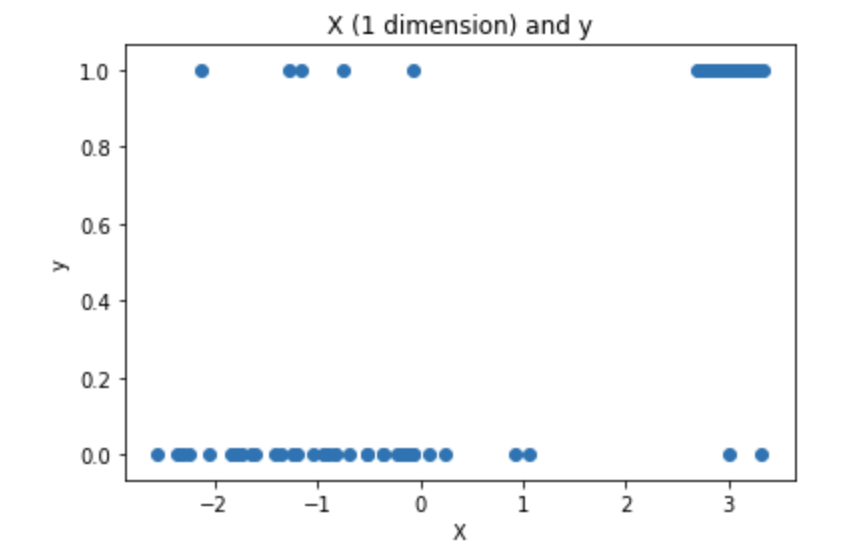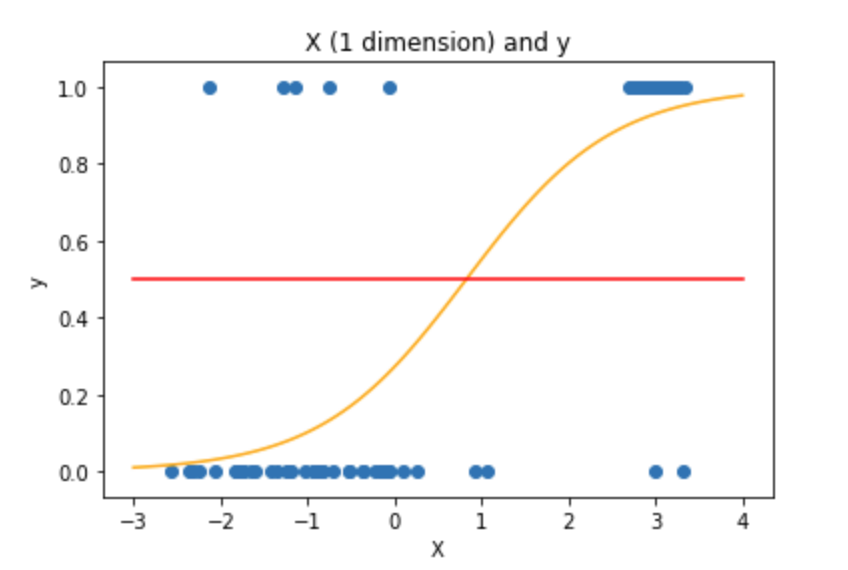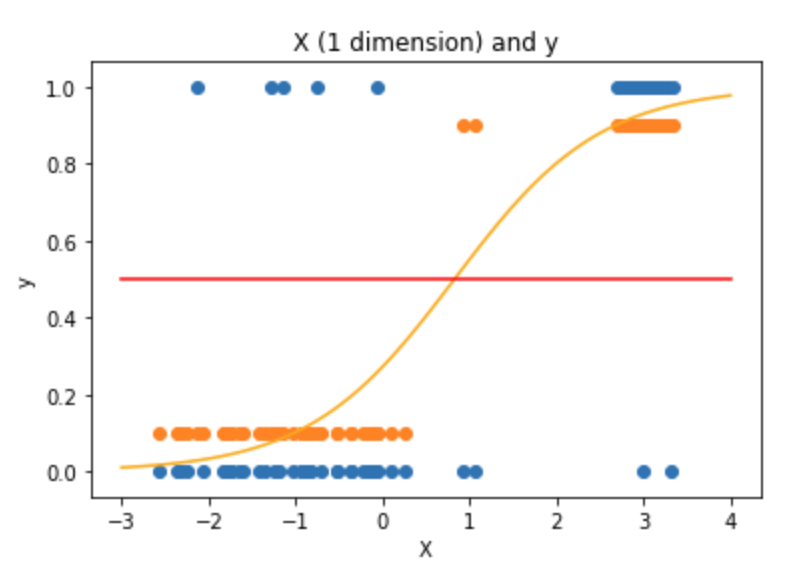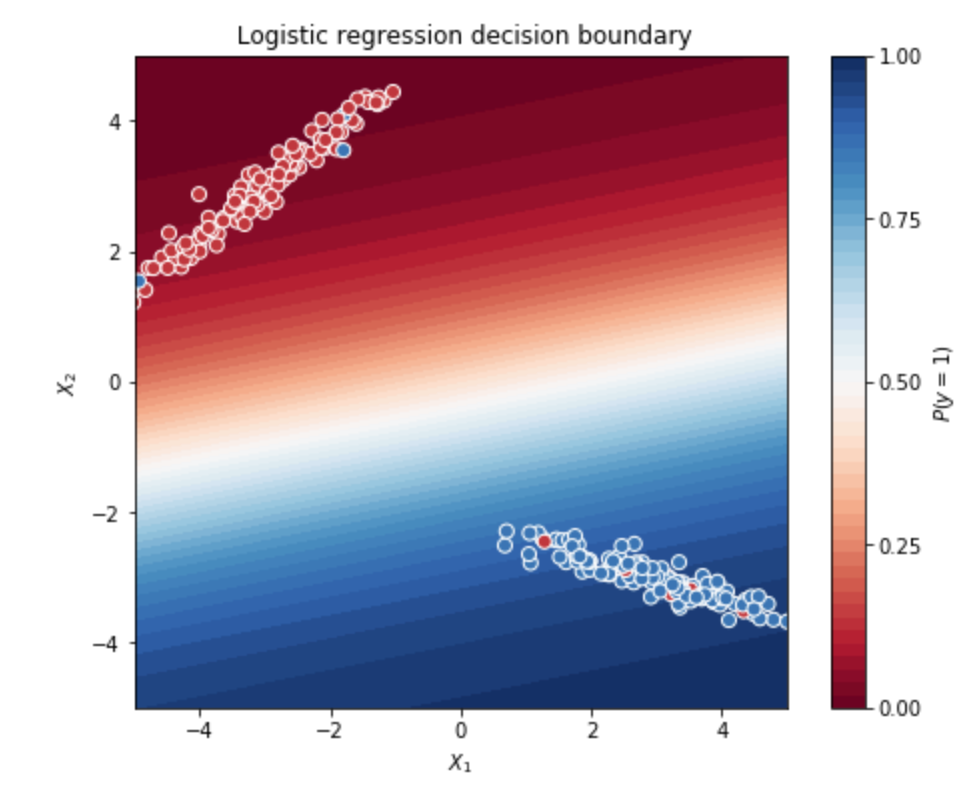4.1 KiB
Exercise 3 Decision boundary
The goal of this exercise is to learn to fit a logistic regression on simple examples and to understand how the algorithm separated the data from the different classes.
1 dimension
First, we will start as usual with features data in 1 dimension. Use make classification from Scikit-learn to generate 100 data points:
X,y = make_classification(
n_samples=100,
n_features=1,
n_informative=1,
n_redundant=0,
n_repeated=0,
n_classes=2,
n_clusters_per_class=1,
weights=[0.5,0.5],
flip_y=0.15,
class_sep=2.0,
hypercube=True,
shift=1.0,
scale=1.0,
shuffle=True,
random_state=88
)
Warning: The shape of X is not the same as the shape of y. You may need (for some questions) to reshape X using: X.reshape(1,-1)[0].
- Plot the data using a scatter plot. The x-axis contains the feature and y-axis contains the target.
The plot should look like this:
-
Fit a Logistic Regression on the generated data using scikit learn. Print the coefficients and the interception of the Logistic Regression.
-
Add to the previous plot the fitted sigmoid and the 0.5 probability line. The plot should look like this:
- Create a function
predict_probabilitythat takes as input the data point and the coefficients and that returns the predicted probability. As a reminder, the probability is given by:p(x) = 1/(1+ exp(-(coef*x + intercept))). Check you have the same results as the methodpredict_probafrom Scikit-learn.
def predict_probability(coefs, X):
'''
coefs is a list that contains a and b: [coef, intercept]
X is the features set
Returns probability of X
'''
#TODO
probabilities =
return probabilities
-
Create a function
predict_classthat takes as input the data point and the coefficients and that returns the predicted class. Check you have the same results as the class methodpredictoutput on the same data. -
On the plot add the predicted class. The plot should look like this (the predicted class is shifted a bit to make the plot more understandable, but obviously the predicted class is 0 or 1, not 0.1 or 0.9) The plot should look like this:
2 dimensions
Now, let us repeat this process on 2-dimensional data. The goal is to focus on the decision boundary and to understand how the Logistic Regression create a line that separates the data. The code to plot the decision boundary is provided, however it is important to understand the way it works.
- Generate 500 data points using:
X, y = make_classification(n_features=2,
n_redundant=0,
n_samples=250,
n_classes=2,
n_clusters_per_class=1,
flip_y=0.05,
class_sep=3,
random_state=43)
- Fit the Logistic Regression on X and y and use the code below to plot the fitted sigmoid on the data set.
The plot should look like this:
xx, yy = np.mgrid[-5:5:.01, -5:5:.01]
grid = np.c_[xx.ravel(), yy.ravel()]
#if needed change the line below
probs = clf.predict_proba(grid)[:, 1].reshape(xx.shape)
f, ax = plt.subplots(figsize=(8, 6))
contour = ax.contourf(xx, yy, probs, 25, cmap="RdBu",
vmin=0, vmax=1)
ax_c = f.colorbar(contour)
ax_c.set_label("$P(y = 1)$")
ax_c.set_ticks([0, .25, .5, .75, 1])
ax.scatter(X[:,0], X[:, 1], c=y, s=50,
cmap="RdBu", vmin=-.2, vmax=1.2,
edgecolor="white", linewidth=1)
ax.set(aspect="equal",
xlim=(-5, 5), ylim=(-5, 5),
xlabel="$X_1$", ylabel="$X_2$")
The plot should look like this:



